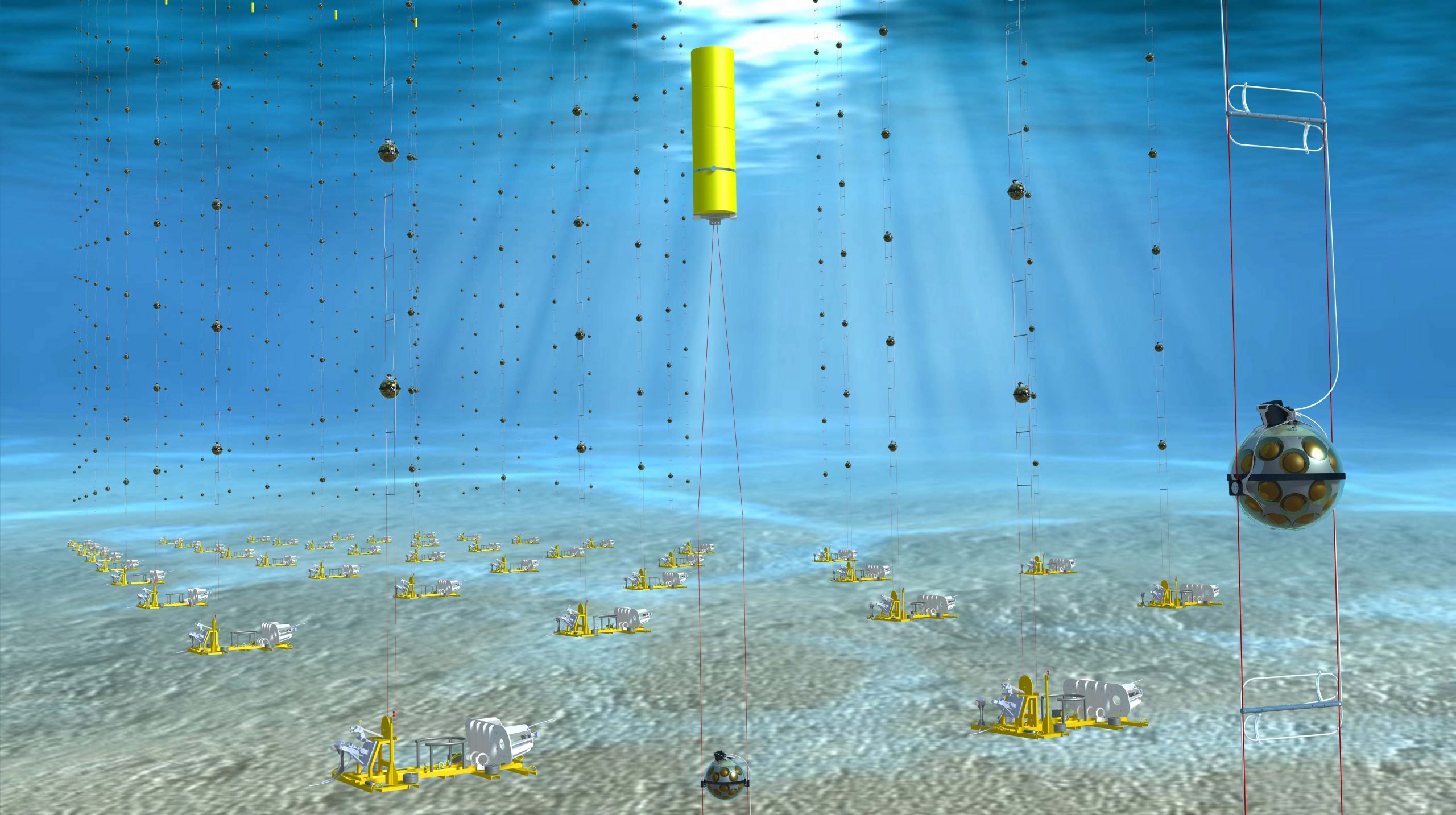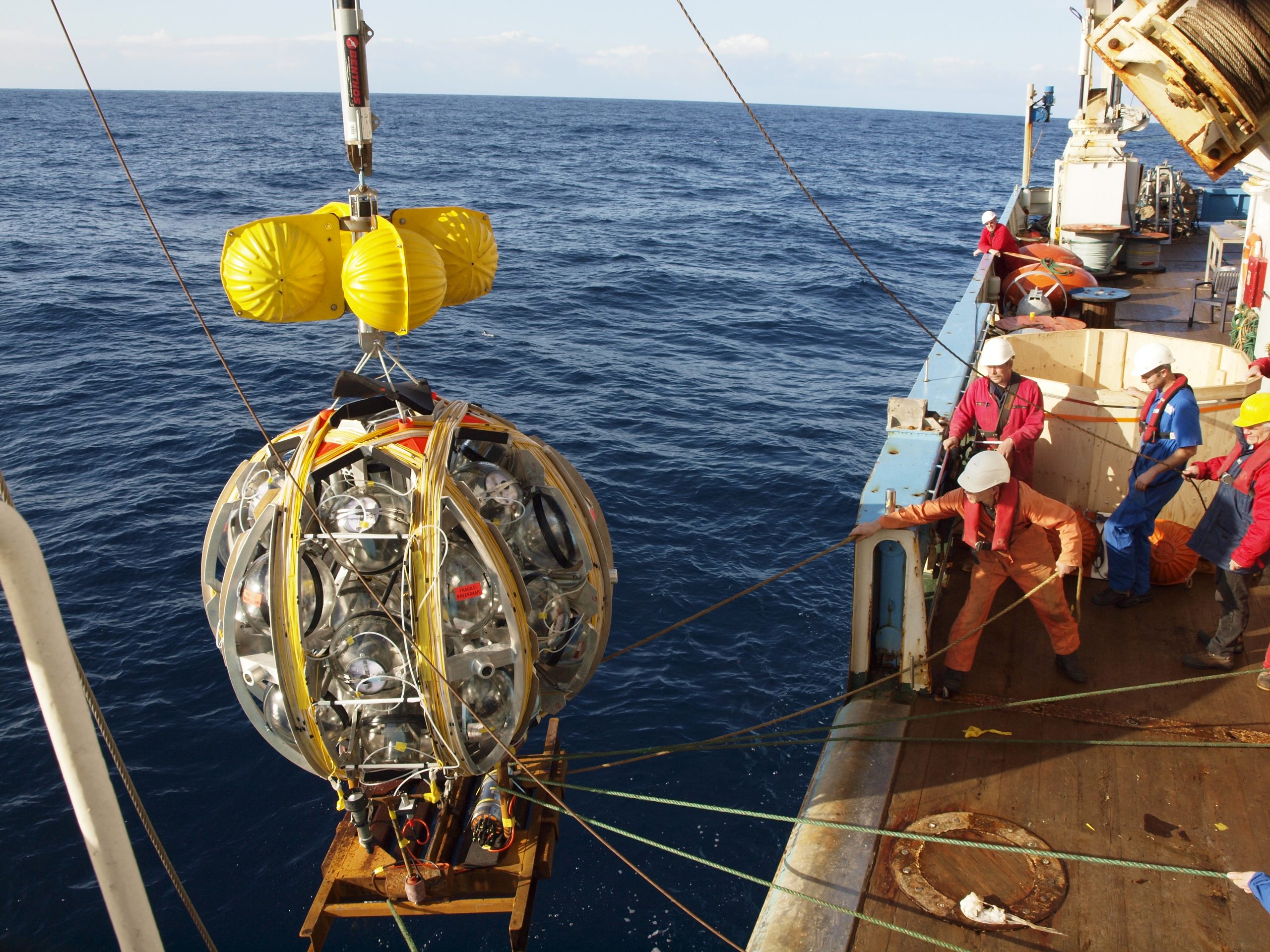
White Rabbit (WR) is used to establish a common notion of time across the network of detectors composing this underwater neutrino telescope. This is key to be able to timestamp detection events and reconstruct the particle tracks.
Nikhef has been involved in the design of many parts (mechanical, electrical and software) of the KM3NeT detector. The design of the Central Logic Board and implementing White Rabbit Technology in its FPGA is largely a Nikhef contribution.
The KM3NeT collaboration is building an undersea neutrino detector, which exploits the faint Cherenkov light produced along the pattern of relativistic charged particles emerging from the interactions of neutrinos with rock or water inside or in proximity of the detector to reconstruct the properties of the parent neutrino. The KM3NeT neutrino detector is a 3-dimensional array of optical sensors on the bottom of the Mediterranean sea.

The optical sensor, called Digital Optical Module (DOM), is a glass sphere hosting 31 photomultipliers. The light signals collected by the PMTs are digitized by custom front-end electronic boards, called Central Logic Board (CLB), and sent to a computing farm located on-shore. A set of 18 DOMs, distributed along a string and connected through a backbone cable and two ropes, constitutes a Detection Unit (DU). Each DU is completed with a base module containing electro-optical circuits that connect to a Main Electro Optical Cable to the shore station.
The detection of one or more photons by a Photo Multiplier Tube (PMT) in the Digital Optical Module (DOM) is time stamped at the Central Logic Board. Per 100 ms timeslice, all recorded timestamps of all 31 PMTs are sent to the shore station. Here, timeslice data from all DOMs are routed to one of the servers in a computer farm. Data in a single timeslice is assigned to single server in the farm. Per timeslice a new server is assigned in a round robin fashion such that there is enough time per timeslice to run a particle track reconstruction algorithm.
Particle tracks can be reconstructed by combining the detection location (i.e., which DOM and PMT in the KM3NeT array detected Cherenkov light) and the exact detection time. This process relies on the fact that all DOMs in the array have an exact notion of time and this is where White Rabbit Technology used.
White Rabbit Technology makes sure that each and every DOM in the array has a notion of time, better than 1 ns, such that timestamps from the full detector can be related to each other. The communication channel used for the White Rabbit protocol is also used to transmit all data to the shore station and to control each DOM.
KM3NeT uses two flavors of data acquisition network. Part of the detector uses a so called broadcasting architecture where a single communication channel is split and broadcast to all DOMs in the detector while the DOM return channels are received individually. This led to a non-standard implementation of the WR protocol. Part of the detector is operated in this way.
The current data acquisition system uses WR in its standard way, i.e., a hierarchy of WR switches to distribute the notion of time. In the current setup White Rabbit switches in the shore station connect to two redundant sub-sea (therefore called “Wet”) White Rabbit Switches located in each DU base module. These “Wet White Rabbit Switches” in the DU base module connect to the 18 DOMs in the string. The up-links of the DU base module switches are connected via a DWDM optical network to the shore station White Rabbit Switches.
